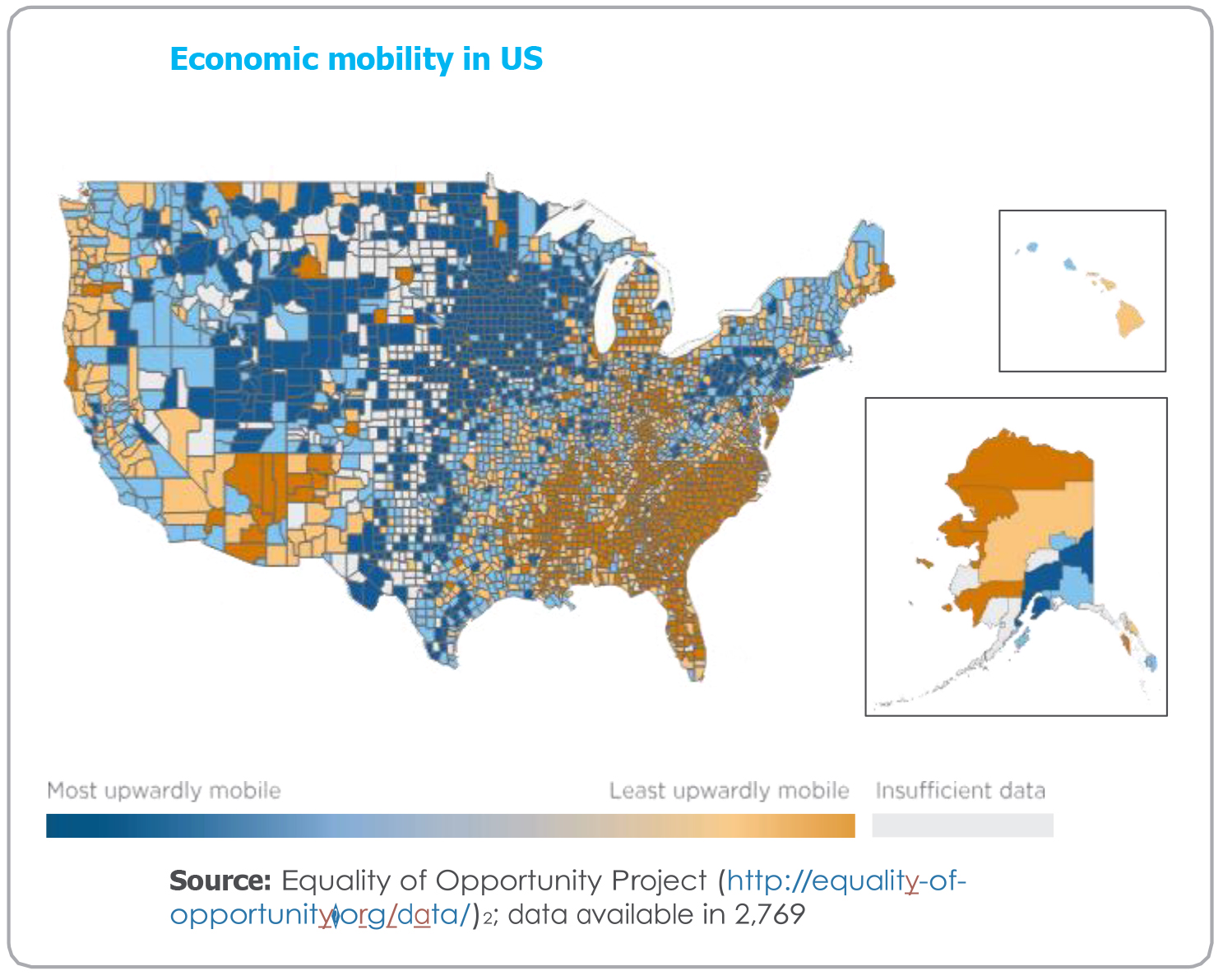
Dwight Loveday, Interim Assistant Dean and Department Head
I previously mentioned that I attended the National 4-H Leadership meeting. I listened to a very interesting presentation, “Social Mobility in Rural America – Insights from Communities Whose Young People Are Climbing the Income Ladder”. This study focused on the “American Dream” of working hard and getting ahead. They studied rural counties that excelled in youth economic development. Nineteen communities in four regions – Texas Panhandle, Minnesota, North Dakota and Nebraska – were studied to find why youth in those counties are able to rise on the income ladder. (see map)
A shortcoming of the study was the limited regions of the country and absence of some minority groups. They have expanded the study to look at more people in other regions. In 4-H, we serve all groups and all living areas. So, the question is “will they find similar results” for other parts of the country and population demographics.
Although each community was different, they found six common factors that seem to support youth up- ward mobility.
- A high expectation that youth will “opt in” and work hard to acquire the skills to build a better future; a low tolerance for opting out.
- Strong, informal support systems, with neighbors helping neighbors.
- An early focus on career pathways.
- A wealth of opportunities for youth to build life skills, regardless of the community’s size.
- Many potential challenges to accessing opportunities, but creative solutions for overcoming them.
- A sense of shared fate and a deep commitment to sustaining the community.
I believe many of our 4-H programs are hitting these factors. Think about your community; what is happening in regard to these factors? Are these factors working in your community? Consider these results when you are working with community leaders when planning and implementing youth opportunities.
